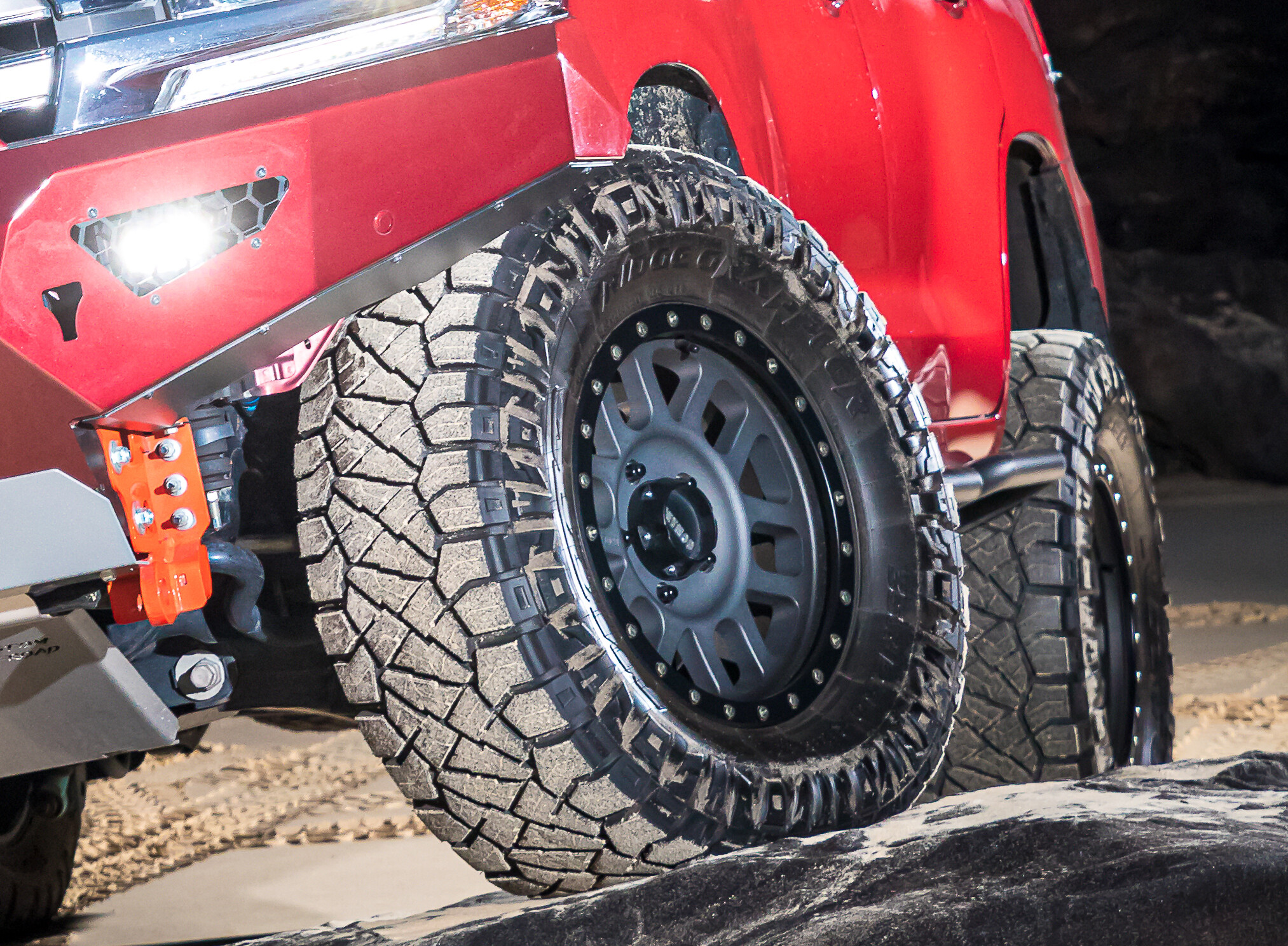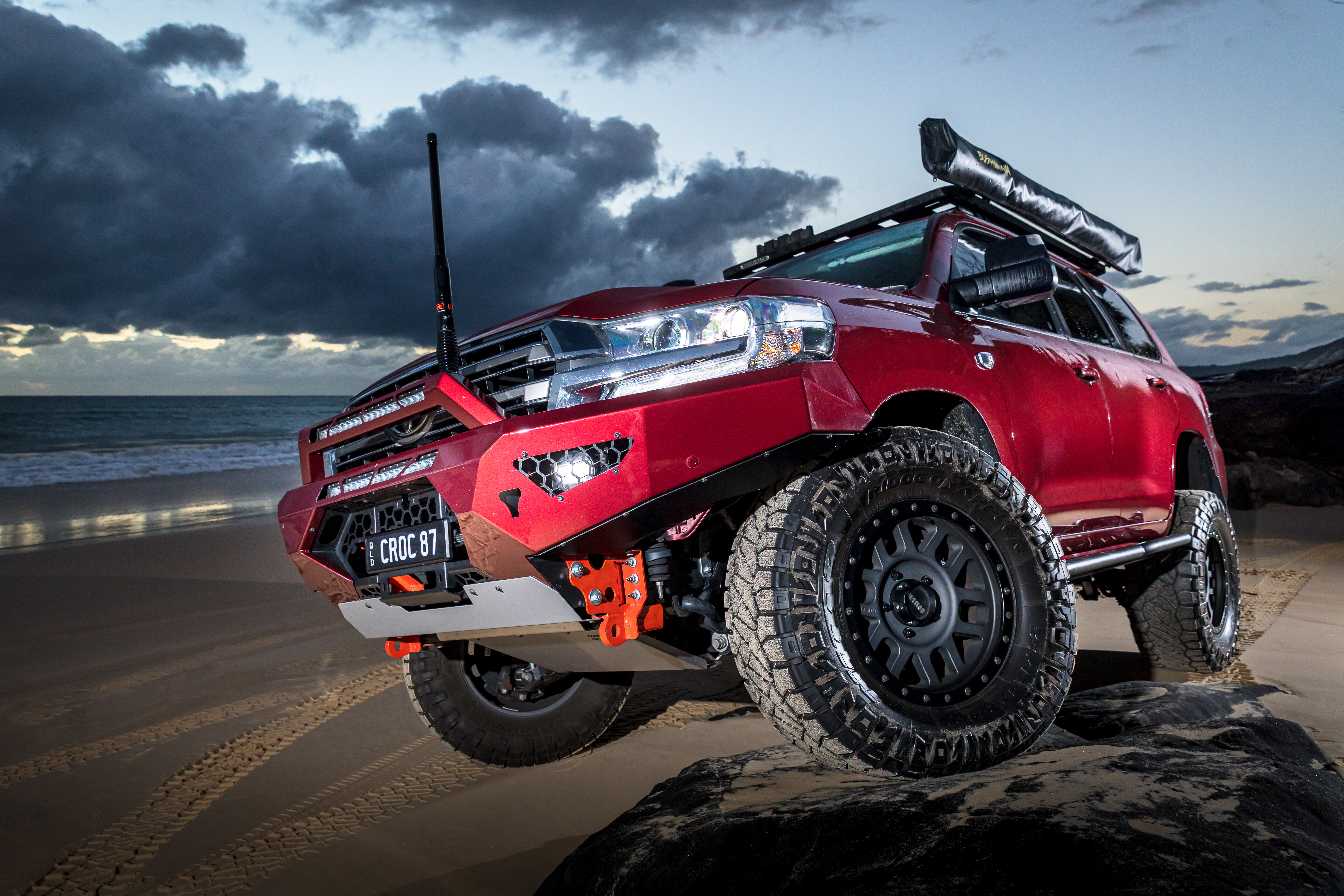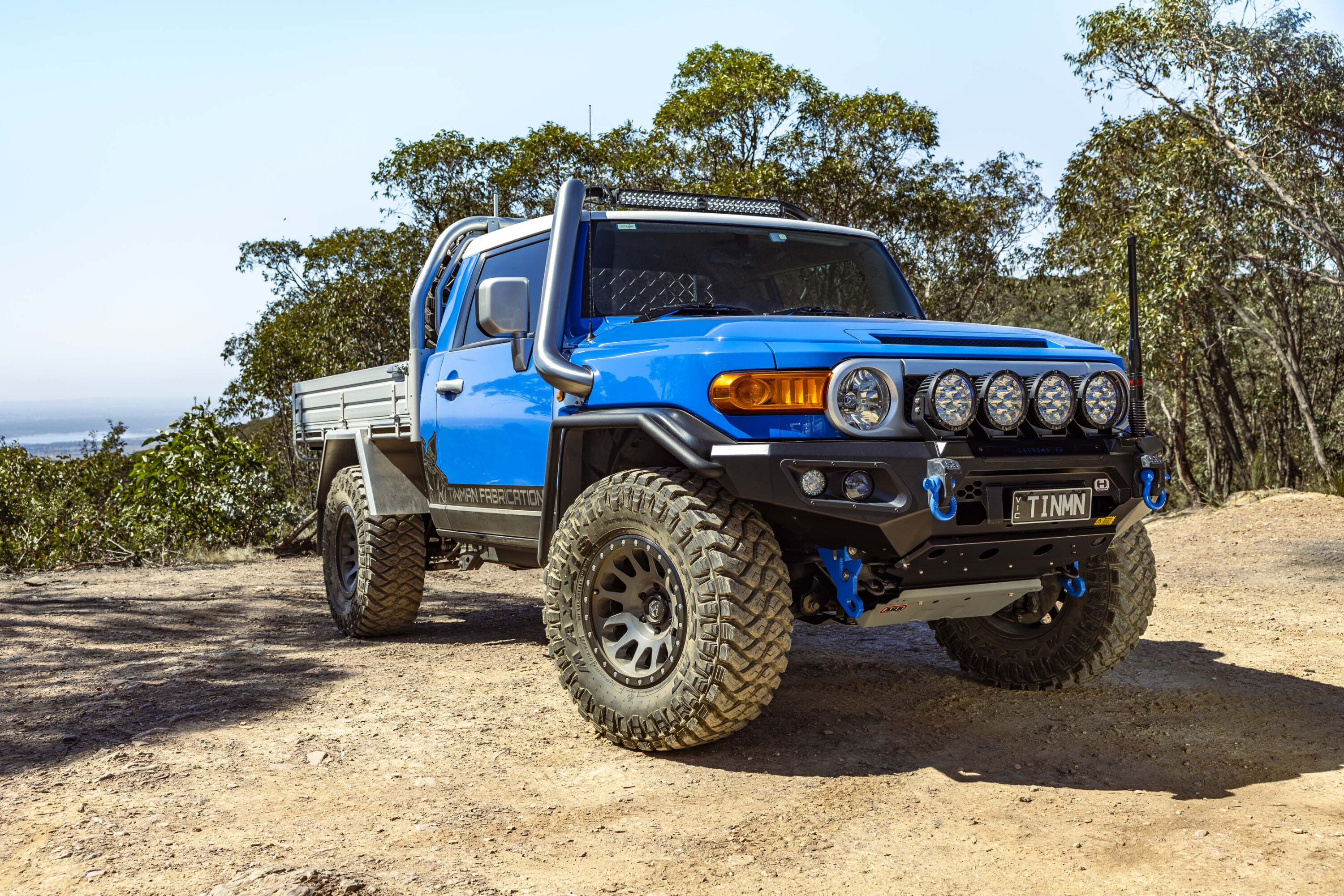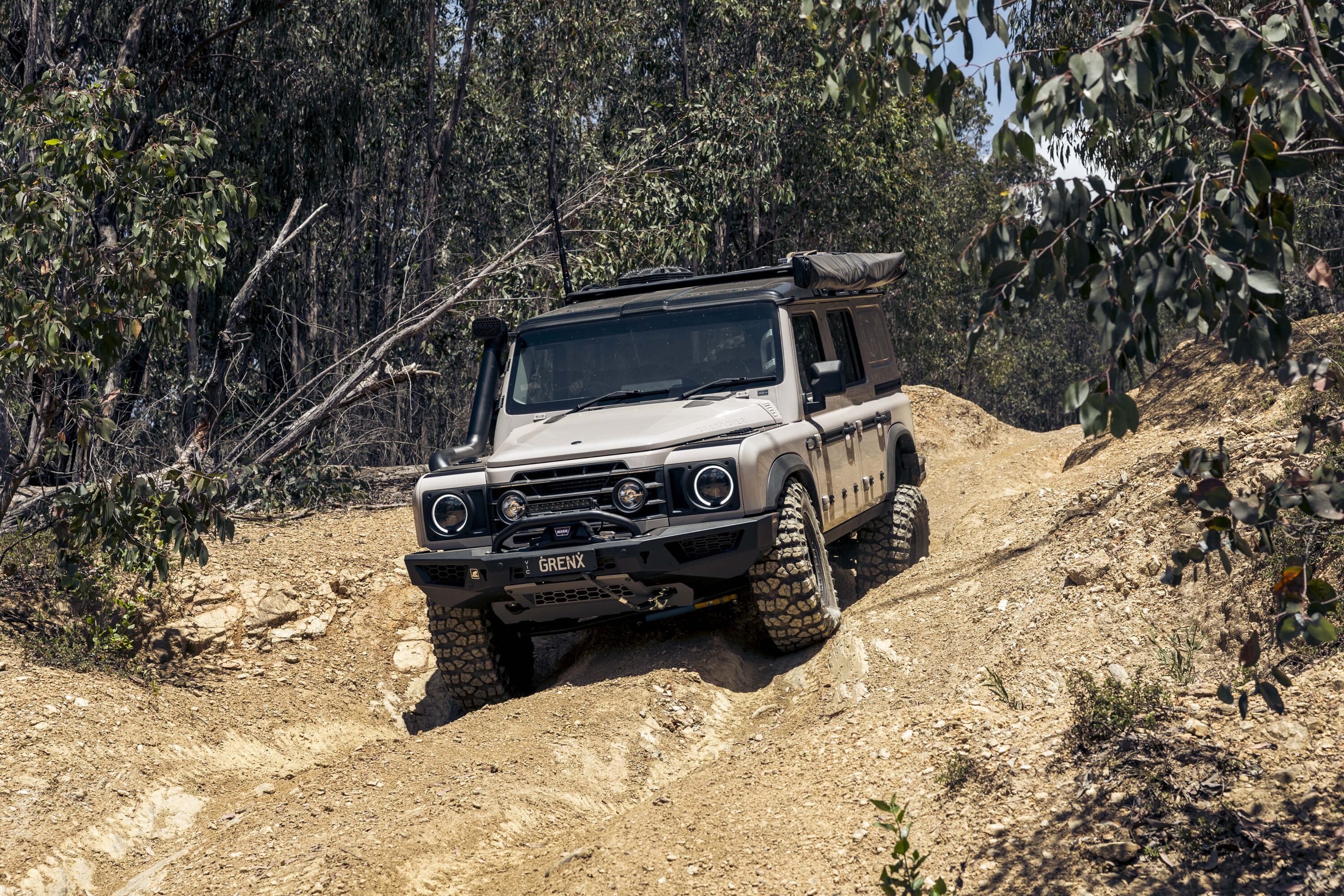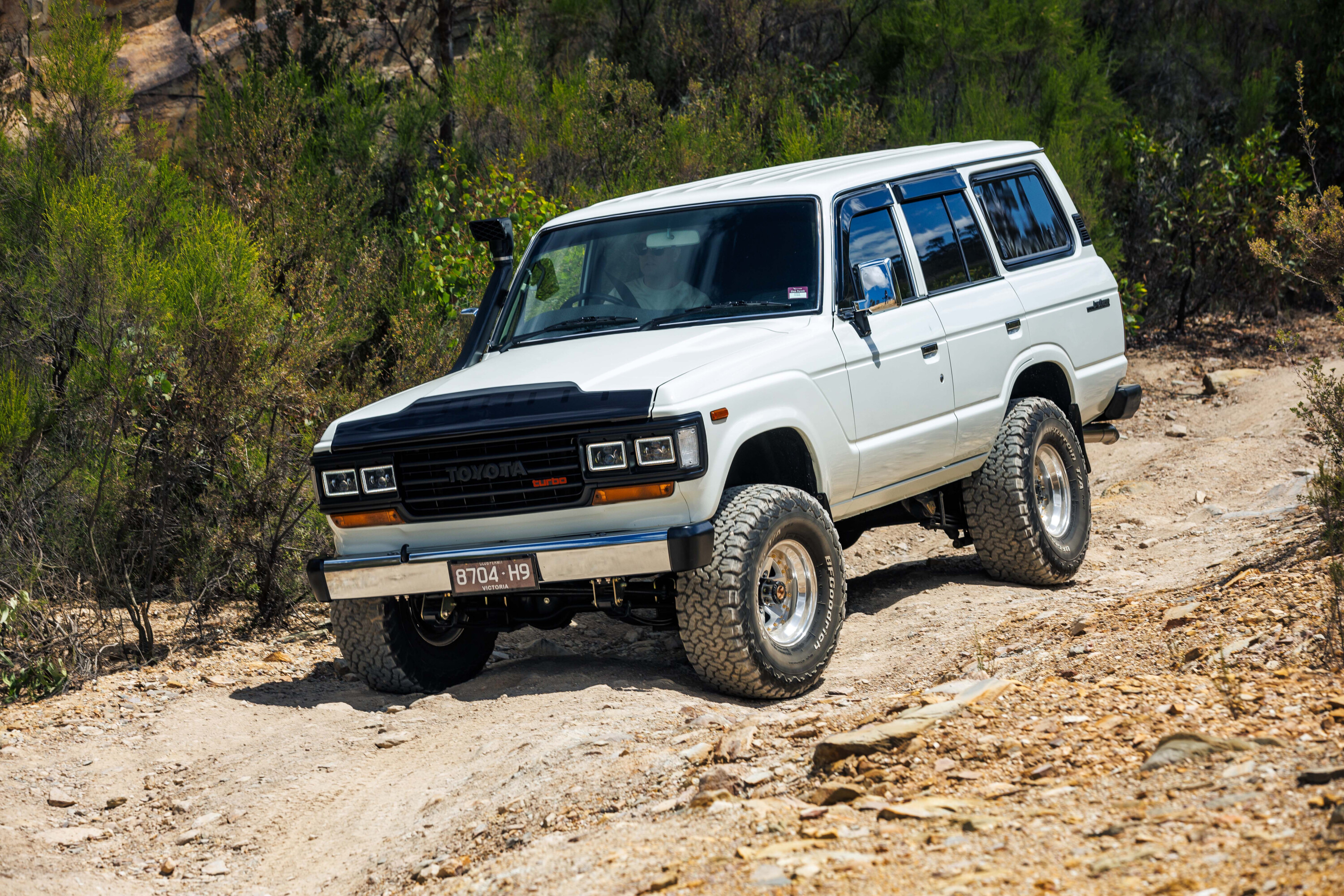There’s a side of Australia most don’t ever see. Perched up in their high-rise apartments in the guts of cities all along the eastern seaboard, the average Joe has no understanding of what lies beyond the city lights. They’ve never seen the endless kilometres of corrugations. Couldn’t fathom the idea of hours between fuel stops, let alone days. The concept that a marked road may be nigh on impassable, requiring winching, sawing and technical driving ability to master it, is so foreign to them you may as well be describing a Mongolian odyssey. But for those with red dirt in their veins it’s a part of life; it defines not only their entire concept of adventure, but the very vehicles they build to tame the great outdoors.
With his sights set on serious remote touring, Luke knew he’d need a serious 4WD to get the job done, and with a Lifestyle Campers Reconn R2 ready to hook up to the back, a modern dual cab wasn’t going to cut the mustard; it’d need a bit of serious get up and go as well. Enter a stunning Merlot Red 2020 LC200 GXL, one of the toughest 4WDs on the market in factory form, and even tougher again after Luke had KDT Automotive Solutions spin its automotive wizardry on it.
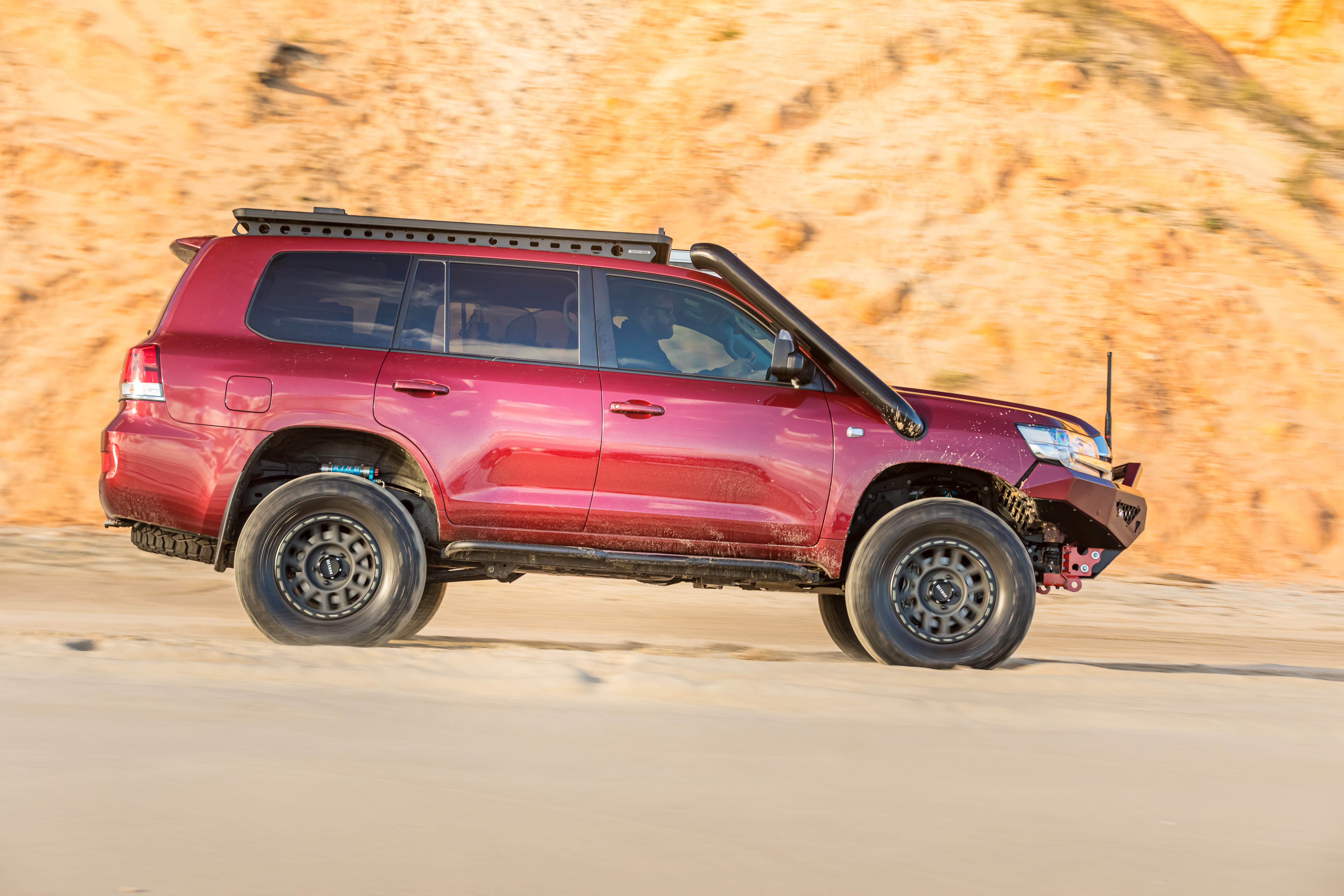
Like many tourers on the market, Luke knew the gear he’d be adding would start eating into the factory GVM, leaving him in a pinch of strife if he ever came face to face with a stern inspector holding a set of scales. With that in mind before he even picked up the keys, he had Darren from KDT lined up for a second-stage rego-certified GVM upgrade, bumping the Cruiser up to a massive 3800kg legal weight limit. With the LC200 so robust right out of the factory, extensive modifications weren’t required to boost the carrying capacity, but he did start with a solid foundation.
Hiding in each wheel of the Cruiser are huge 2.5-inch diameter King shocks with remote reservoirs and adjustable dampening, allowing Luke to dial-in his suspension set-up to suit exactly the loads he’s carrying and how he wants the rig to ride on the magic-carpet scale. Up front, the King shocks have bumped the ride height three inches closer to the clouds with Eibach springs, while the rear sits two inches higher on a set of Aussie-made King springs, a popular combination to level out the factory rake so many OEM 4x4s come with these days.
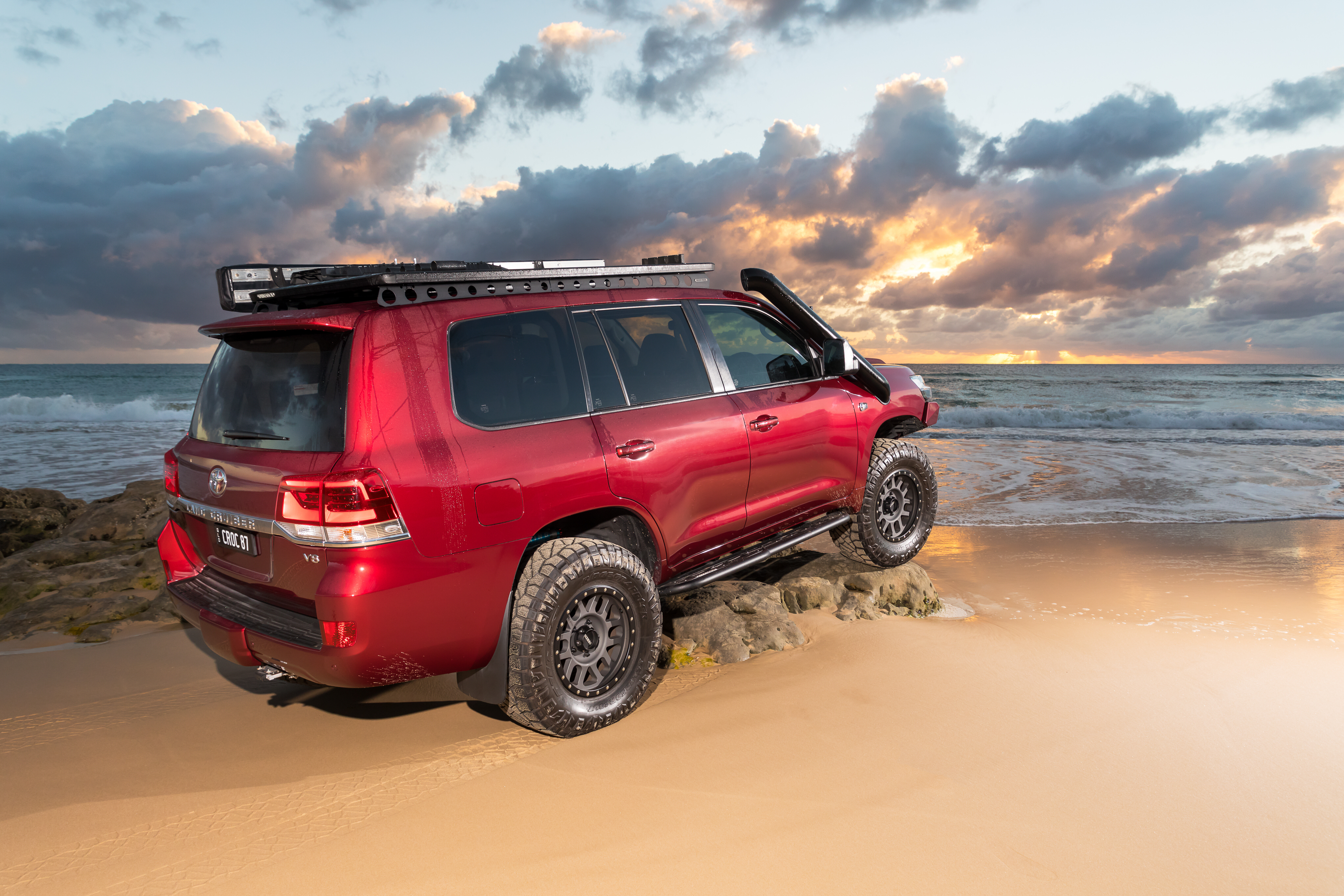
While it was on the hoist, a host of ancillary parts were fitted to ensure the Cruiser didn’t just sit better, but performed better too. Back to the front, and the restrictive OEM upper control arms have been binned and in their place now reside a pair of significantly beefier Blackhawk replacement arms, with the upper ball joint realigned to suit the new ride height; the suspension now far more comfortable at full travel. Moving backwards, the restrictive Panhard rod has swung the Cruiser’s diff to the side with the new lift, so an adjustable unit from Roadsafe was optioned up, providing a strength upgrade as well as adjustability to get the axle tracking straight again. Eagle-eyed readers will spot a set of Airbagman helper springs tucked inside the rear coils, allowing Luke to effectively increase his spring weight if the rear end is loaded up.
With so much space liberated in the wheel arches, Luke knew exactly what he’d need to do to fill it. “The overall goal of the build was long-range touring,” Luke told us. “But I didn’t want to compromise the look of the car.” Each corner now sports huge 18×9-inch 309 Grids from Method Race Wheels. Measuring in at +18 offset, they line up perfectly with the guards, giving the Cruiser an aggressive look without requiring huge flares to cover larger offsets. They’re wrapped front to back in 35×12.5-inch Nitto Ridge Grapplers, an aggressive all-terrain tyre perfect for a do-it-all tourer. “I didn’t want to go down the path of flares,” Luke says. “It meant with the offset I was running, a body mount chop and some minor guard trimming was required.”

Keeping the whole show motoring down the road is the renowned twin-turbo bent-eight 1VD-FTV diesel. It’s breathing freely through a five-inch Vogue Industries stainless-steel snorkel and Unifilter combination. A Direction-Plus pre-filter helps ensure the injector pump and injectors live a long and healthy life, while a Process West catch can separates oil from the engine’s blow-by, helping keep the intake gunk free without blocking the EGR like so many people do these days.
Back on the outside and the Cruiser’s distinct look comes from the clean-as-a-whistle ‘Predator’ bar from Offroad Animal in Victoria. The colour-coded unit not only armours up the Cruiser’s soft bits, it also provides a home for a 22-inch slimline LED light bar from Stedi. Sliding back and the up-armouring continues with a set of Legendex rock sliders protecting the vulnerable sill panels.
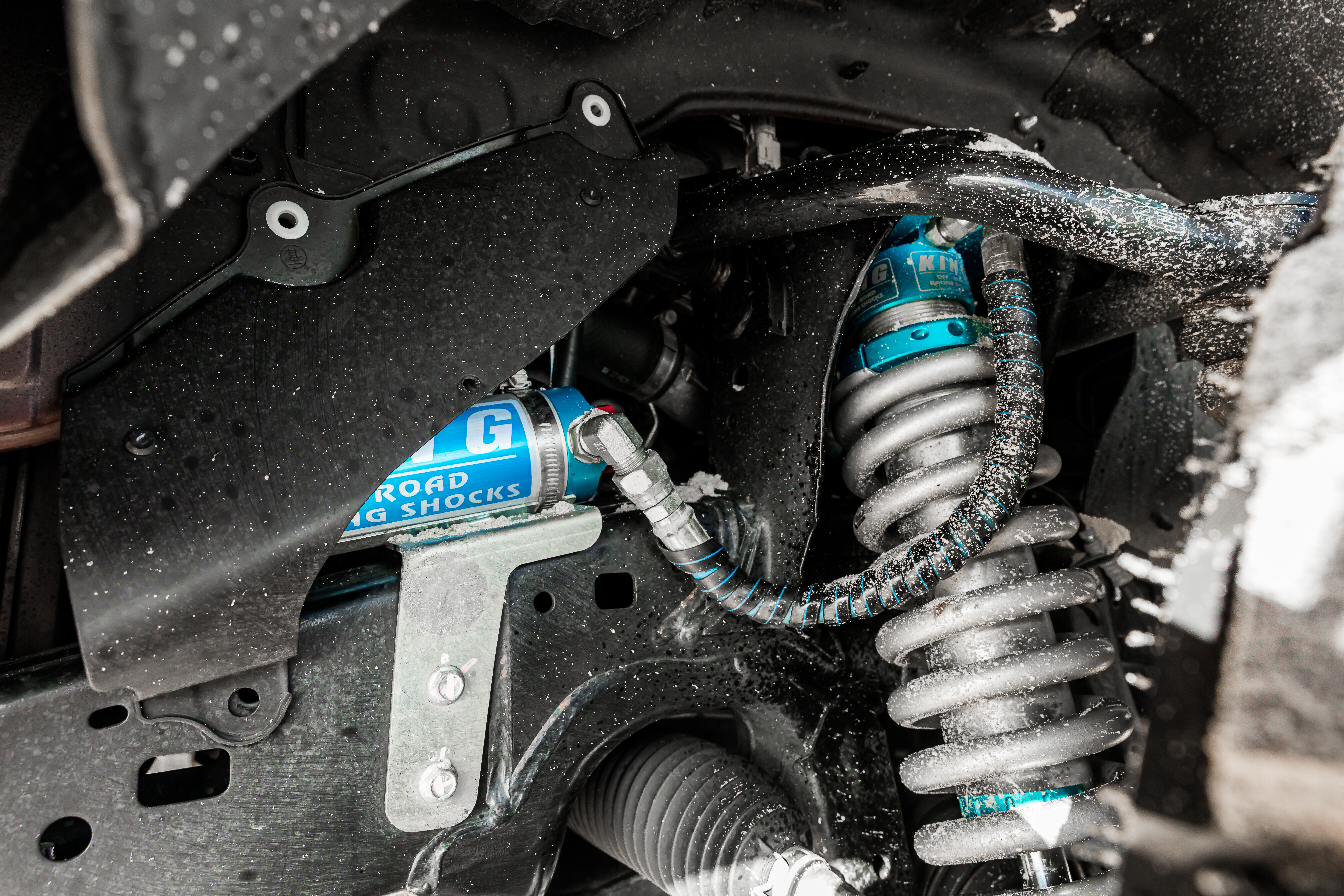
Underneath, there’s more steel than a Sherman tank in the form of Custom Offroad bash plates front to back. MSA towing mirrors help bump out the view too, to let Luke keep a keen eye on the Lifestyle Campers set-up on the hitch.
Up top there’s more than two square metres of touring storage thanks to a full Rhino-Rack set-up resting on a Backbone mounting system. It plays host to a 270-degree awning, a couple of additional light bars and a few recovery items if things turn pear-shaped on the tracks.
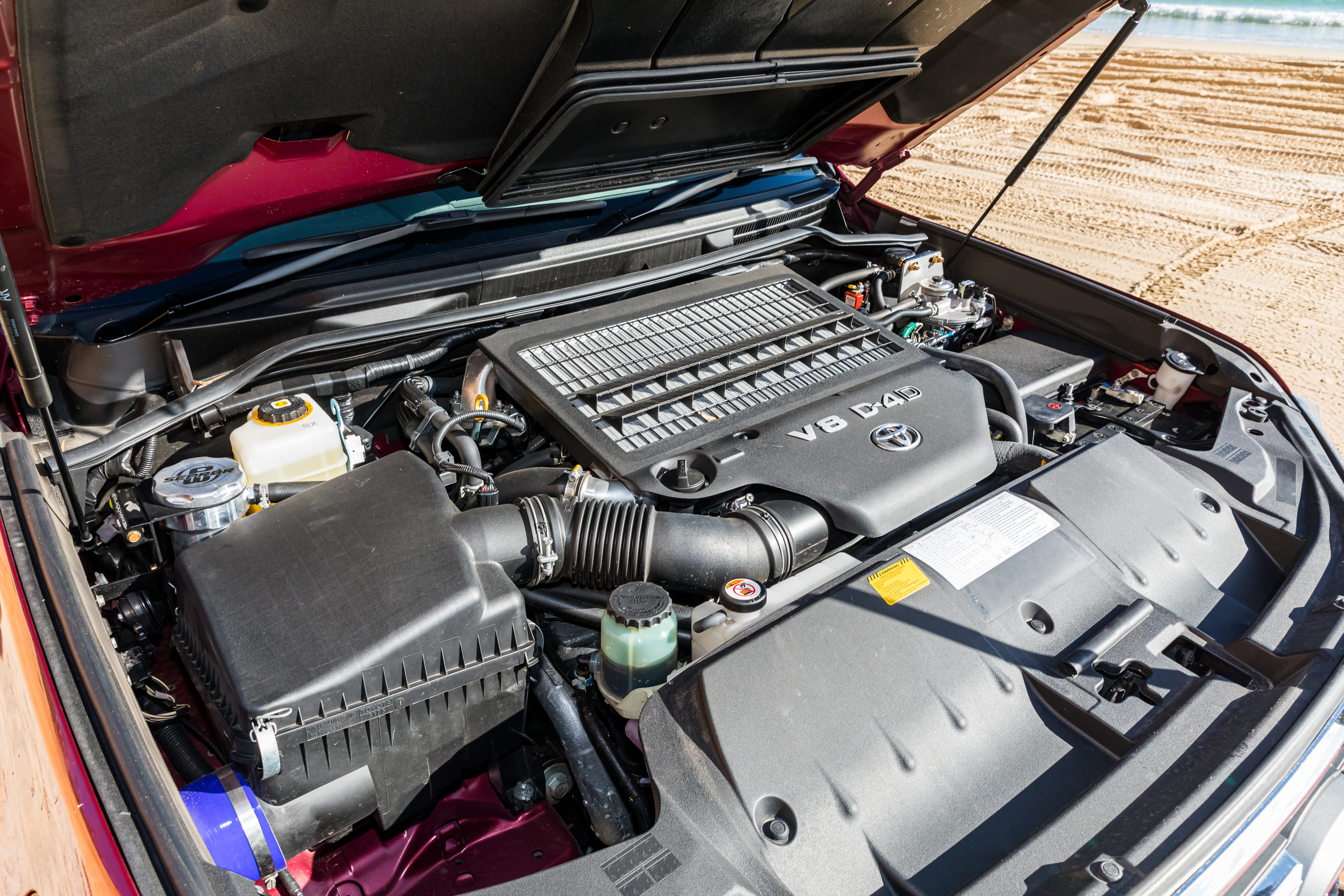
Sliding into the captain’s seat, Luke’s kept things simple but practical for his remote touring needs. A Throttle Monkey unit lets him dial in the throttle sensitivity, allowing him to dull it right down for precise rock-crawling work, or give him instant throttle response in soft sand or mud. A GME XRS 330C falls easily to hand, the high-tech unit not only giving clear communications but allowing Luke to replay previous messages and locate other members in his convoy thanks to the built-in location services. Hanging off the centre console is a full-sized iPad with off-road mapping, and a Redarc trailer-brake controller equipping Luke with all the tools he needs in his off-road arsenal.
While Luke’s Cruiser may not be one of the most modified we’ve ever seen, it’s easy to see it’s one of the most well thought out and intentionally modified. Everything he needs for remote touring, everything he’d want for hard weekend wheeling, and enough drool factor to ensure he’ll spend plenty of nights sitting in the shed looking at it with a smile on his face.
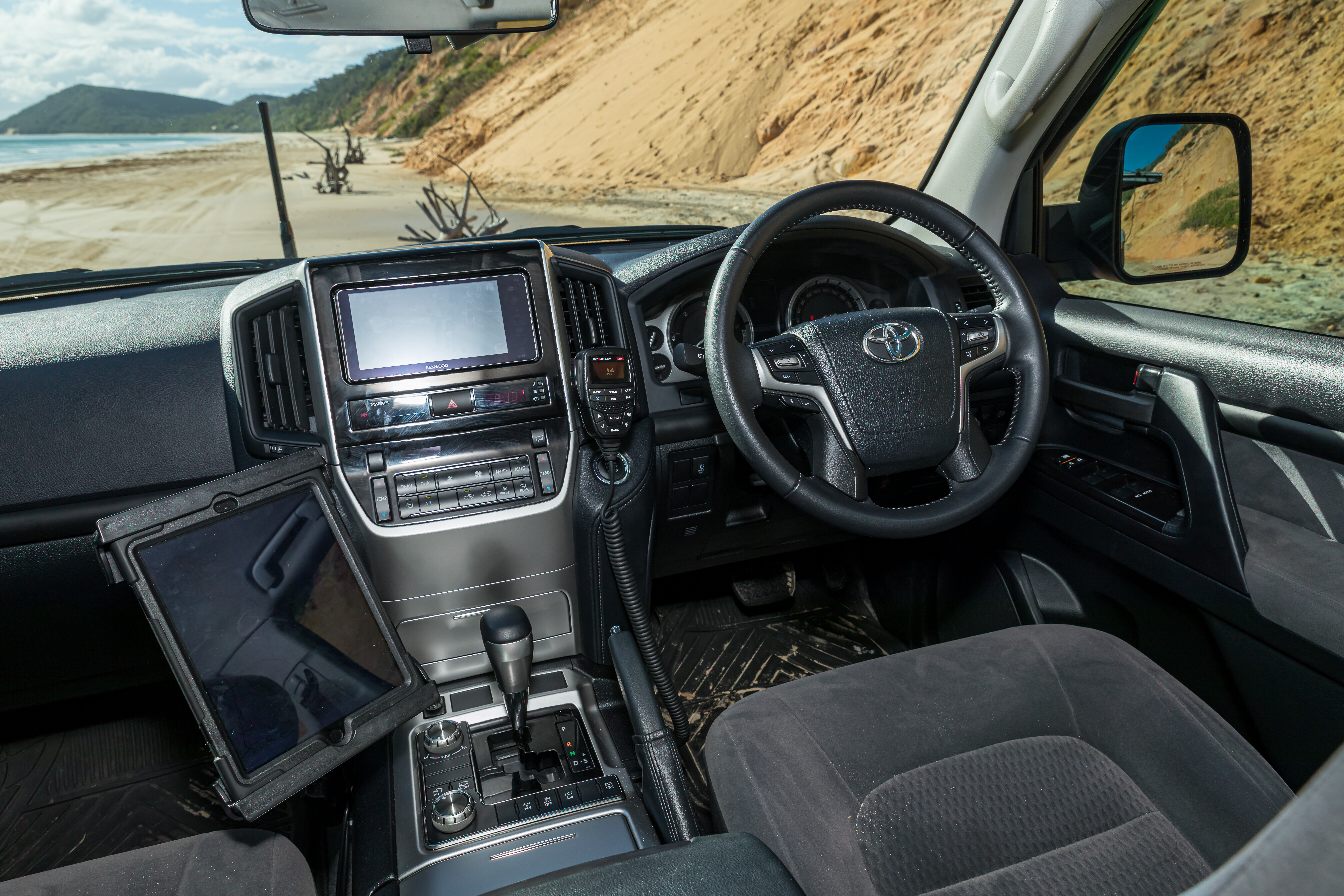
TRADING SPACERS
In days gone by, if you wanted your wheels to sit further out of the guards, you’d whack in a set of wheel spacers, convince yourself you’d recheck their tightness regularly, then never check them again until they came loose and left you stranded. With so many suitable aftermarket wheel options on the market, people are now putting the effort in to not only getting the right-looking wheel for their rig, but making sure it fits right too. Radius and width are easy enough to understand, but when it comes to offset a lot of people are left scratching their head wondering what the heck the +18 even means. We’re a bunch of nice fellas here at 4X4 Australia, so we figured we’d take the chance to shine a little light on the topic. Picture a typical wheel at 8-inch wide, but we’ll call it 160mm because mixing metric and imperial is an offence that should be cause for capital punishment. If your wheel is 0 offset, it means the wheel-mounting surface sits smack bang in the middle of the wheel, you’ll have 80mm of the wheel poking out from the rotor, 80mm poking in. If you’ve got a positive offset, your wheel-mounting surface moves to the outside by the same amount, a +20 offset means you’d have 100mm of wheel poking in, and 60mm poking out. Negative offset is just the opposite and would sit further out by 20mm.
